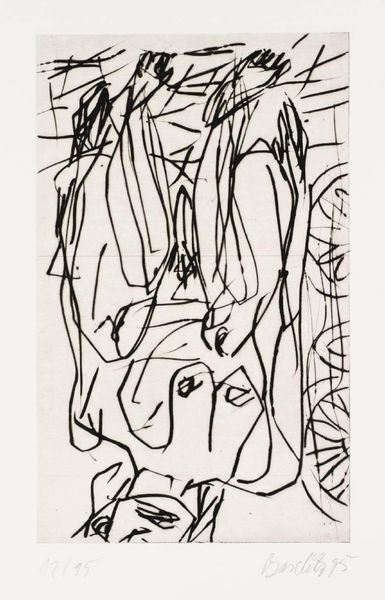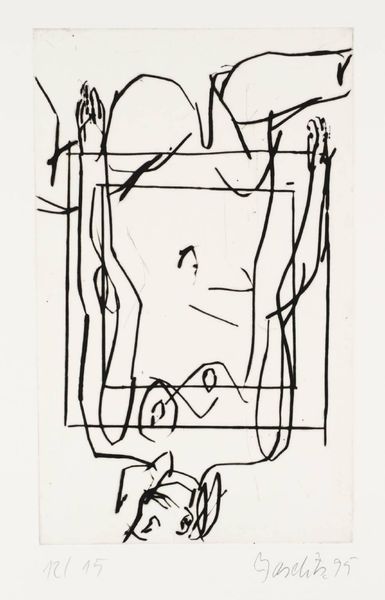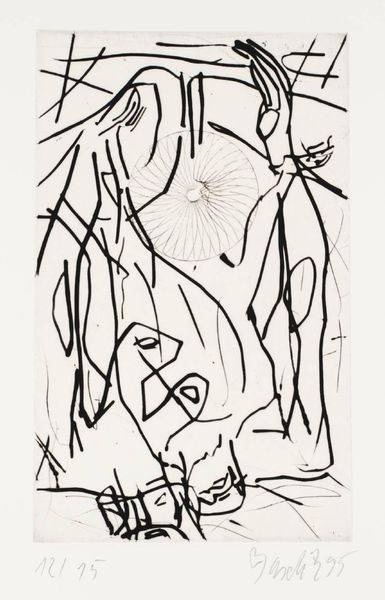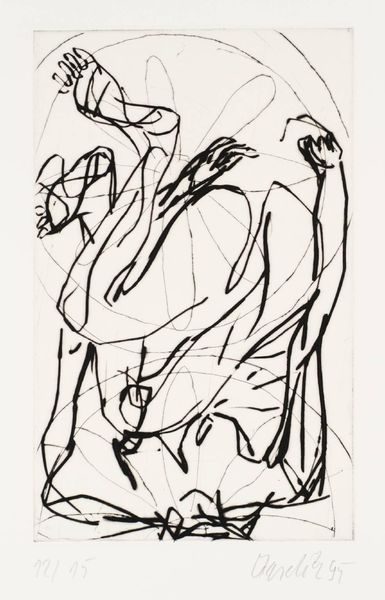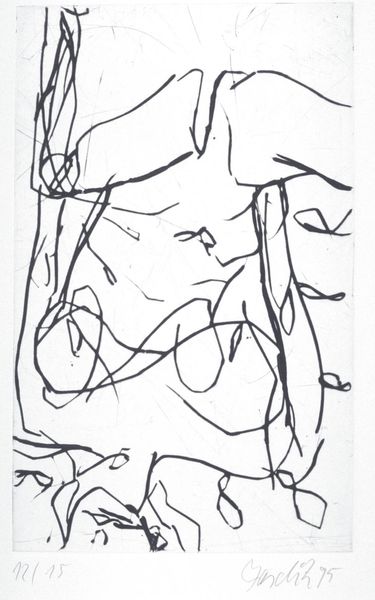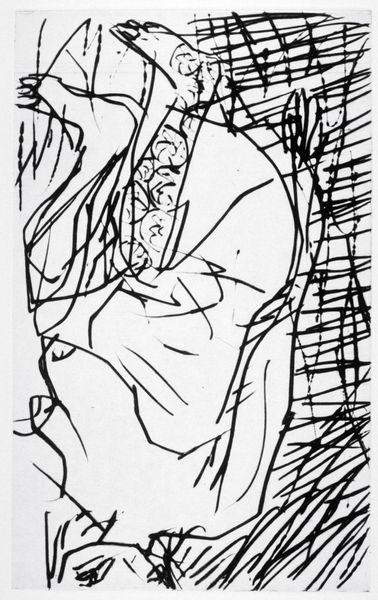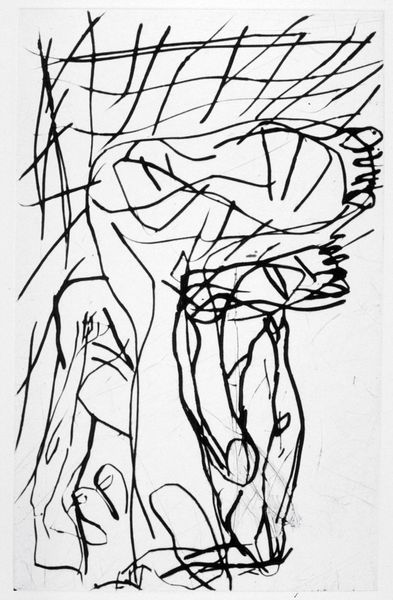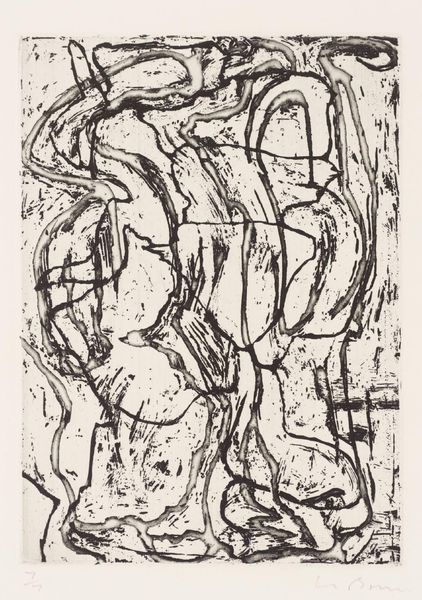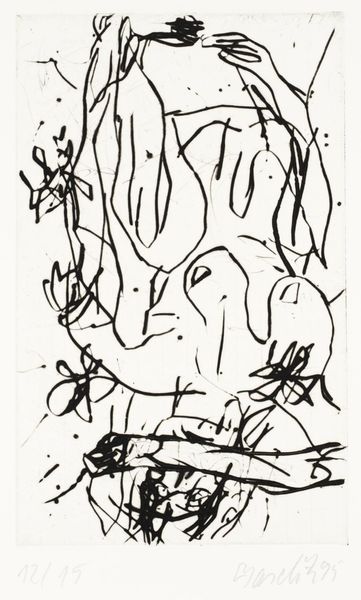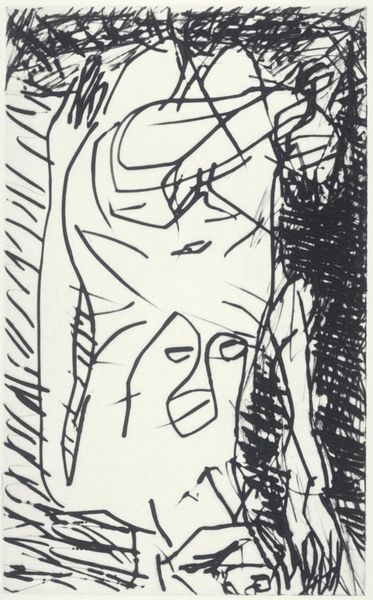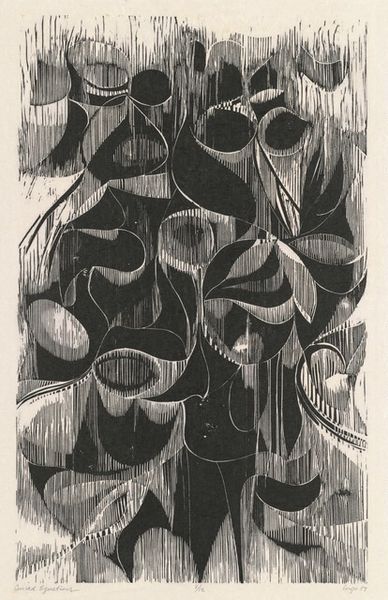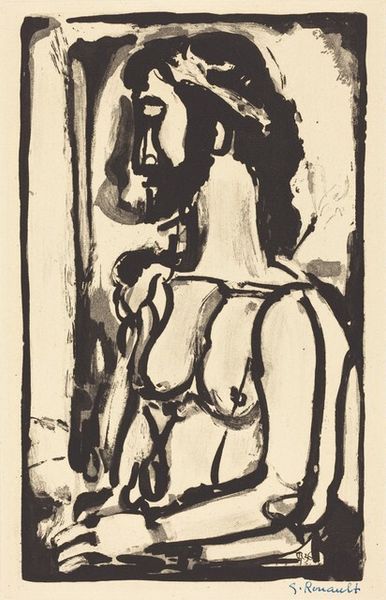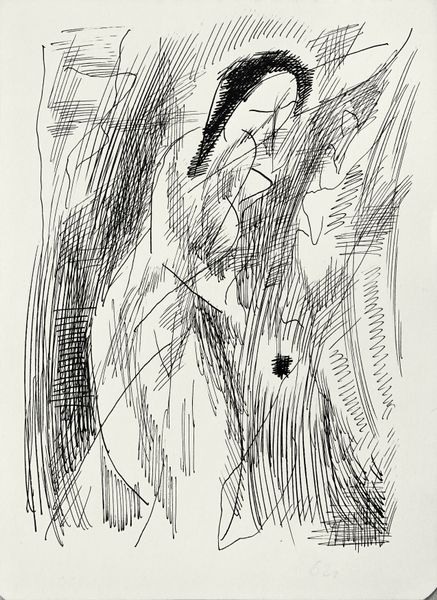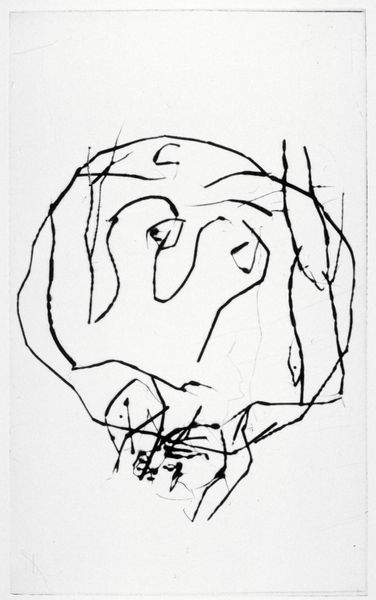![[no title] by Georg Baselitz](/_next/image?url=https%3A%2F%2Fd2w8kbdekdi1gv.cloudfront.net%2FeyJidWNrZXQiOiAiYXJ0ZXJhLWltYWdlcy1idWNrZXQiLCAia2V5IjogImFydHdvcmtzL2Q2NDg5MWIyLTFlNDAtNDhiNi1iZjg0LTIwMTQxODJlMDIyMi9kNjQ4OTFiMi0xZTQwLTQ4YjYtYmY4NC0yMDE0MTgyZTAyMjJfZnVsbC5qcGciLCAiZWRpdHMiOiB7InJlc2l6ZSI6IHsid2lkdGgiOiAxOTIwLCAiaGVpZ2h0IjogMTkyMCwgImZpdCI6ICJpbnNpZGUifX19&w=2048&q=75)
Dimensions: image: 289 x 176 mm mount: 562 x 409 x 4 mm
Copyright: © Georg Baselitz | CC-BY-NC-ND 4.0 DEED, Photo: Tate
Editor: This untitled print by Georg Baselitz from 1999 uses strong lines to depict what appears to be an upside-down figure, or perhaps multiple figures? I find the composition quite disorienting. What do you see in this piece? Curator: The disorientation is precisely the point. Baselitz frequently inverts his figures, challenging our perceptions and disrupting familiar visual cues. What do you suppose is the effect of inversion, not just on how we see, but on how we feel? Editor: I guess it forces you to reconsider your perspective, maybe confront ingrained assumptions. Curator: Precisely. The crude lines, the stark black and white – all contribute to a sense of unease, of something being fundamentally 'off.' Consider the fragmented forms; perhaps Baselitz is hinting at the fragmentation of identity in a postwar world. Editor: That's fascinating. I hadn't thought about it in terms of historical context. Curator: Art always speaks within a framework of memory, experience, and anticipation. The visual language employed is rarely arbitrary. Editor: Thanks, I’ll keep that in mind.
Comments
Join the conversation
Join millions of artists and users on Artera today and experience the ultimate creative platform.
tate 7 months ago
⋮
Baselitz’s vigorous and expressive style, influenced by the drawing and paintings of the mentally ill, often represents the body as a site of anxiety. This series of prints show a female figure crouching and twisted. The body is fragmented: in some works, the head is cropped, while others feature only isolated limbs. The hatched and scored quality adds to the sense of raw spontaneity and even violence. Many of the prints include flowers and vegetation which, with the use of greens and browns, suggest wild nature and fertility. Gallery label, July 2015
